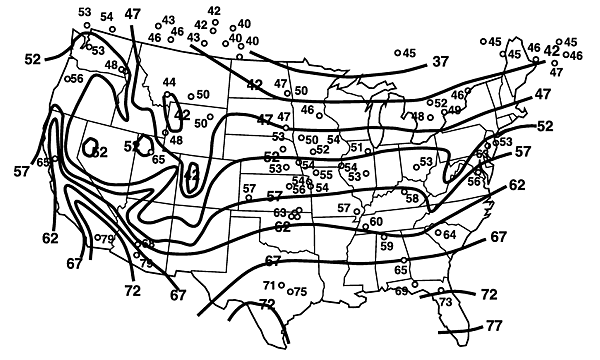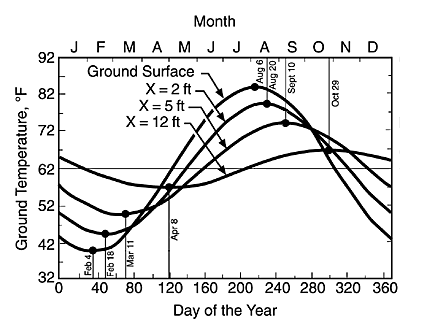俺第一次看见深井冰这词,好像是海豚说的,就觉得反常识。直到今天,俺终于花了几分钟,搞了调查研究,结论是美国不可能有深井冰。
http://www.builditsolar.com/Projects/Cooling/EarthTemperatures.htm
咱们看看soil 温度。
Soil Temperature
Soil temperature varies from month to month as a function of incident solar radiation, rainfall, seasonal swings in overlying air temperature, local vegetation cover, type of soil, and depth in the earth. Due to the much higher heat capacity of soil relative to air and the thermal insulation provided by vegetation and surface soil layers, seasonal changes in soil temperature deep in the ground are much less than and lag significantly behind seasonal changes in overlying air temperature. Thus in spring, the soil naturally warms more slowly and to a lesser extent than the air, and by summer, it has become cooler than the overlying air and is a natural sink for removing heat from a building. Likewise in autumn, the soil cools more slowly and to a lesser extent than the air, and by winter it is warmer than the overlying air and a natural source for adding heat to a building.
At soil depths greater than 30 feet below the surface, the soil temperature is relatively constant, and corresponds roughly to the water temperature measured in groundwater wells 30 to 50 feet deep. This is referred to as the “mean earth temperature.” Figure 2 shows the mean earth temperature contours across the United States. In Virginia, the mean earth temperature ranges from 52ºF in the northern Shenandoah Valley and Winchester area to 62ºF in coastal Tidewater.

上面是mean temperature. 那就看看一年四季温度是怎么变的:

深井深井,肯定得30-50尺以下吧。你们看看上面这两个图里,哪里的深井在32度以下的?没有!连接近的都没有!
Conclusion:
A cursory survey indicates that the contiguous United States are a hostile environment to 深井冰.